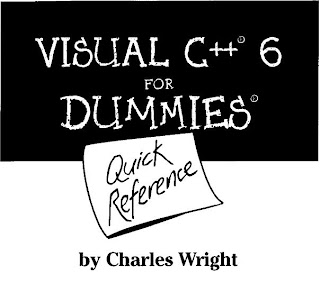
Fundamentals of Materials Science and Engineering is an alternate version of my text, Materials Science and Engineering: An Introduction, Fifth Edition. The contents of both are the same, but the order of presentation differs and Fundamen-tals utilizes newer technologies to enhance teaching and learning.
With regard to the order of presentation, there are two common approaches to teaching materials science and engineering—one that I call the ‘‘traditional’’ approach, the other which most refer to as the ‘‘integrated’’ approach. With the traditional approach, structures/characteristics/properties of metals are presented ?rst, followed by an analogous discussion of ceramic materials and polymers. Introduction, Fifth Edition is organized in this manner, which is preferred by many materials science and engineering instructors. With the integrated approach, one particular structure, characteristic, or property for all three material types is presented before moving on to the discussion of another structure/characteristic/property. This is the order of presentation in Fundamentals.
Probably the most common criticism of college textbooks is that they are too long. With most popular texts, the number of pages often increases with each new edition. This leads instructors and students to complain that it is impossible to cover
all the topics in the text in a single term. After struggling with this concern (trying to decide what to delete without limiting the value of the text), we decided to divide the text into two components. The ?rst is a set of ‘‘core’’ topics—sections of the text that are most commonly covered in an introductory materials course, and second, ‘‘supplementary’’ topics—sections of the text covered less frequently. Furthermore, we chose to provide only the core topics in print, but the entire text(both core and supplementary topics) is available on the CD-ROM that is included with the print component of Fundamentals. Decisions as to which topics to include in print and which to include only on the CD-ROM were based on the results of a recent survey of instructors and con?rmed in developmental reviews. The result is a printed text of approximately 525 pages and an Interactive eText on the CD-ROM, which consists of, in addition to the complete text, a wealth of additional resources including interactive software modules, as discussed below.
The text on the CD-ROM with all its various links is navigated using Adobe Acrobat. These links within the Interactive eText include the following: (1) from the Table of Contents to selected eText sections; (2) from the index to selected topics within the eText; (3) from reference to a ?gure, table, or equation in one section to the actual ?gure/table/equation in another section (all ?gures can beenlarged and printed); (4) from end-of-chapter Important Terms and Concepts to their de?nitions within the chapter; (5) from in-text boldfaced terms to their corresponding glossary de?nitions/explanations; (6) from in-text references to the corresponding appendices; (7) from some end-of-chapter problems to their answers; (8) from some answers to their solutions; (9) from software icons to the corresponding interactive modules; and (10) from the opening splash screen to the supporting web site
With regard to the order of presentation, there are two common approaches to teaching materials science and engineering—one that I call the ‘‘traditional’’ approach, the other which most refer to as the ‘‘integrated’’ approach. With the traditional approach, structures/characteristics/properties of metals are presented ?rst, followed by an analogous discussion of ceramic materials and polymers. Introduction, Fifth Edition is organized in this manner, which is preferred by many materials science and engineering instructors. With the integrated approach, one particular structure, characteristic, or property for all three material types is presented before moving on to the discussion of another structure/characteristic/property. This is the order of presentation in Fundamentals.
Probably the most common criticism of college textbooks is that they are too long. With most popular texts, the number of pages often increases with each new edition. This leads instructors and students to complain that it is impossible to cover
all the topics in the text in a single term. After struggling with this concern (trying to decide what to delete without limiting the value of the text), we decided to divide the text into two components. The ?rst is a set of ‘‘core’’ topics—sections of the text that are most commonly covered in an introductory materials course, and second, ‘‘supplementary’’ topics—sections of the text covered less frequently. Furthermore, we chose to provide only the core topics in print, but the entire text(both core and supplementary topics) is available on the CD-ROM that is included with the print component of Fundamentals. Decisions as to which topics to include in print and which to include only on the CD-ROM were based on the results of a recent survey of instructors and con?rmed in developmental reviews. The result is a printed text of approximately 525 pages and an Interactive eText on the CD-ROM, which consists of, in addition to the complete text, a wealth of additional resources including interactive software modules, as discussed below.
The text on the CD-ROM with all its various links is navigated using Adobe Acrobat. These links within the Interactive eText include the following: (1) from the Table of Contents to selected eText sections; (2) from the index to selected topics within the eText; (3) from reference to a ?gure, table, or equation in one section to the actual ?gure/table/equation in another section (all ?gures can beenlarged and printed); (4) from end-of-chapter Important Terms and Concepts to their de?nitions within the chapter; (5) from in-text boldfaced terms to their corresponding glossary de?nitions/explanations; (6) from in-text references to the corresponding appendices; (7) from some end-of-chapter problems to their answers; (8) from some answers to their solutions; (9) from software icons to the corresponding interactive modules; and (10) from the opening splash screen to the supporting web site
download link:
DOWNLOAD





